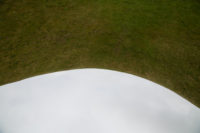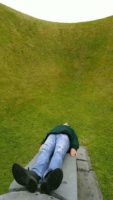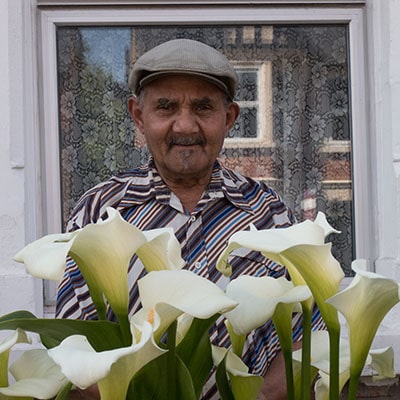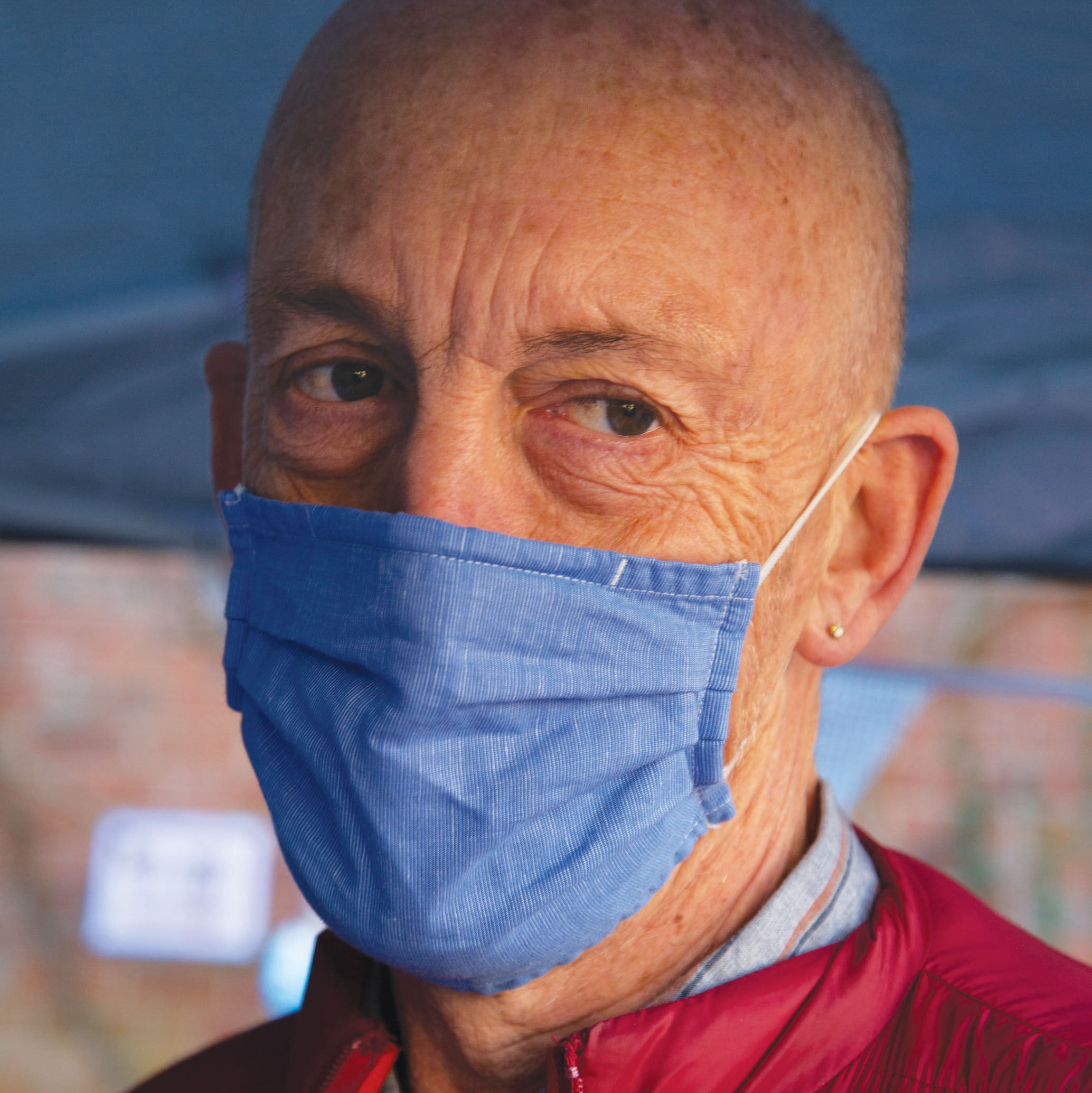Myths, stories and adventures in the Irish ‘Sky Garden’
Liss Ard House, just outside Skibbereen in west Cork has a curious place in the myths and legends that go to make up my family history. My grandfather Abraham Hegarty left the Skibbereen area to join the Royal Navy as a ‘boy second class’ in 1892, recommended by the local squires the Somerville’s of Castletownshend, a village described to me recently as ‘the most English village in Ireland’. The graveyard of the Church of Ireland church that dominates the village attests to its anomalous position, filled with monuments to Chavasse’s, Townshend’s, Somerville’s and Ross’s, almost all very senior British military figures, as well as the joint grave of Edith Somerville and Violet Florence Martin (who wrote under the pseudonym Martin Ross) the couple, in life as well as in literature, who wrote ‘The Irish RM’ series of books.
Abraham fought in WW1 and retired after 30 years service, rising to the rank of Lieutenant Commander; but after that kind of career he was never going to return to live in a newly independent Ireland. One of the Somerville’s was assassinated by the IRA as late as 1936. But he did return occasionally to see family, and the story is that when he did, he stayed at Liss Ard. This seemed unlikely to me when all his relatives were poor farmers around Castlehaven and Toe Head. But one was not so poor, as Lord and Lady Muck discovered on a visit earlier in the month. John Connolly and his wife Mary Ellen bought Liss Ard in 1924. John Connolly ‘s brother Tim married Abraham’s sister Annie – so why wouldn’t a recently retired Royal Navy officer stay in the local ‘big house’ with his (sort of) in-laws when back visiting. Connolly though has a dark reputation in the Hegarty family. Allegedly his money was made by ruthlessly evicting people including his relatives, from their farms after getting them to sign away their property having got them drunk. Stories that make the visit to see the James Turrell-designed ‘Sky Garden’ at Liss Ard all the more intriguing.
In fact the Connolly connection with Liss Ard ended with John’s death in 1947. But the estate has had plenty of colourful episodes in its history since, including being bought by the Swiss Government, without their knowledge, by a rogue spy-master who was sacked for his trouble, as a putative location for a Government-in-exile in the event of a nuclear war in central Europe, in the 1970s. A German art dealer Veithe Turske bought the place in 1989, and in 1990 the development of the Sky Garden began. Turrell, an American known as a ‘land artist’ has work all over the world, and the scale of some of the installations is massive. He has been working on the Roden Crater in Arizona since 1979. The vision for Liss Ard was no exception. Following his first visit to Liss Ard in 1989 Turrell set to work to design three main spaces; the Crater, the Mound and the Pyramid. Work on the Crater began in early 1992. Things didn’t go to plan and only the Crater, aka ‘Sky Garden’ was ever completed, though the Liss Ard Foundation (now defunct) published a chunky book of essays, drawings, photo montages and pictures of models of the whole project. Following more recent incarnations as a rock venue, and organic gardening centre, Liss Ard is now rather prosaically a boutique hotel, wedding and conference venue – with a Sky Garden.
So to the Sky Garden we proceeded one rather blustery and cloudy day. The drive up to the big house is probably the longest I have ever experienced, and the house itself is expensively decorated, including a grand piano allegedly played by various ‘rock gods’ including Nick Cave and Patti Smith, set about with outbuildings, now turned into hotel rooms, a charming garden of the stately home variety with ha-ha and horses grazing peacefully beyond, and the biggest Cedar of Lebanon tree we had ever seen. If only things had turned out differently it could have made a grand seat for Lord and Lady Muck.
But the Sky Garden itself called. It is a bit of a walk from the house through a portal-style gateway in a high stone wall, down a long flight of steps and through some woodland. Then suddenly a huge edifice looms. Having paid the 5 Euro entrance fee and being issued with the combination lock code we shot the bolt on the metal gate and were told to lock it behind us. Only two people allowed in at a time. Once inside, the ‘garden’ itself is accessed via a narrow limestone-walled passage lit from above by a small glazed light funnel, up some steep steps described by a local newspaper as ‘a birthing parallel’ and into the light, or starry skies depending on the time of the visit, of the garden itself. The first impression is of vertiginously steep sides to the grass-covered crater which had recently been mown. Second impression is that there are some pretty large holes in the turf. The Irish climate is a lot wetter than Arizona and this may not have been accounted for in the design. There is a sense of the steep sides slipping towards the centre of the crater with the passage of time and the depredations of the elements. In the centre is a plinth made from black granite. It is designed for two people to lie on (no, not making love) toe-to-toe, head resting on a small granite pillow below the level of the rest of the body. Open your eyes and look up.
The first impression is of vertiginously steep sides to the grass-covered crater which had recently been mown. Second impression is that there are some pretty large holes in the turf. The Irish climate is a lot wetter than Arizona and this may not have been accounted for in the design. There is a sense of the steep sides slipping towards the centre of the crater with the passage of time and the depredations of the elements. In the centre is a plinth made from black granite. It is designed for two people to lie on (no, not making love) toe-to-toe, head resting on a small granite pillow below the level of the rest of the body. Open your eyes and look up.  The view is disorientating. Almost at the edge of the field of view is the top of the crater and above, the sky. On a clear night the view would be stunning – the sky a myriad of bright stars and celestial objects, framed by the blackness of the grass crater. On a sunny day the patterns of clouds and their ever-shifting configurations would be a joy to behold – though not that different from lying flat on a sloping beach. But today the sky was uniformly grey; more Skegness from a bus shelter on the prom in mid-February than a mystical revelation on the edge of the Sahara at night. Nonetheless we stayed and stared.
The view is disorientating. Almost at the edge of the field of view is the top of the crater and above, the sky. On a clear night the view would be stunning – the sky a myriad of bright stars and celestial objects, framed by the blackness of the grass crater. On a sunny day the patterns of clouds and their ever-shifting configurations would be a joy to behold – though not that different from lying flat on a sloping beach. But today the sky was uniformly grey; more Skegness from a bus shelter on the prom in mid-February than a mystical revelation on the edge of the Sahara at night. Nonetheless we stayed and stared.
As we descended the stairs and unlocked the gate we found a young Dutch couple waiting their turn. As we sat on a bench beside a nearby pond munching our sandwiches they re-appeared in short order. The sky had not moved for them.
Wending our way back back thought the wooded glades and occasional stands of exotic trees, we stumbled upon an abandoned tennis court. Ferns and rhodedendrons crowded in upon it, trees overhung it, a thick layer of moss coverd the once pristine surface; there was an eerie stillness, a sense than maybe a terrible crime had been committed one evening long ago, and that nobody had dared approach it ever after. The curse of the Connolly’s? Hurrying on through the dank undergrowth of the woodland we suddenly burst upon the formality of the hotel gardens with their rattan tables and chairs set looking out over the horses and park land waiting for guests to partake of afternoon tea, almost as if the mysteries in the woods and the Sky Garden had never existed.

